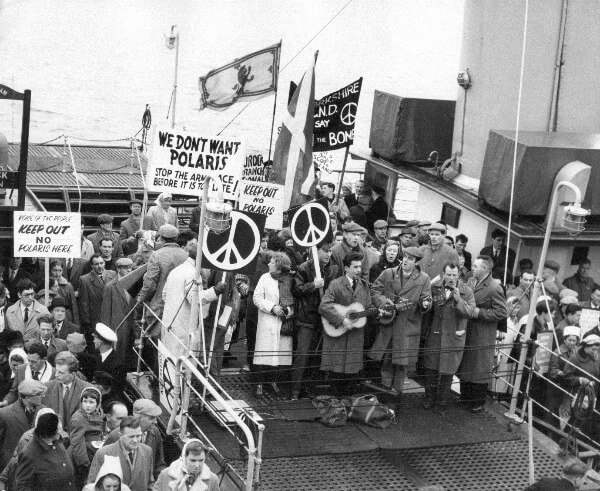 |
Musicians and demonstrators in Holy Loch, Scotland protesting against Polaris missiles, 1961
Not surprisingly, therefore, protest against the Polaris base was quite considerable. Accounts from the time suggest that the physical presence and proximity of the base had an enormous impact on public opinion in Scotland. As Janey and Norman Buchan observed: ‘What gave the campaign in Scotland its strength as well as its particularity was, of course, the coming of Polaris to the Clyde. What had been a terrifying abstraction was now only too real, visible, menacing. We had a particular target which was of immediate and direct relevance. From a very early stage, therefore, it was apparent to us that the mobilisation of opinion in Scotland was more widely based; more representative of the people in general, and therefore, in a word, more working class in character than the early days of CND elsewhere in Britain… One’s first sight of the sinister black hull of a nuclear submarine slowly moving up the estuary is not only the immediate revelation of an obscenity but an enormous stimulant to action.’ The Committee of 100’s first demonstration took place in February 1961, outside the MoD headquarters, to protest the arrival of the US Polaris depot ship at Holy Loch in Scotland. Around 4,000 people sat down in protest, but there were no arrests. |
|
To celebrate six decades of vibrant and powerful activity, this online exhibition displays photos and memories provided by our members and supporters. They selected the photos that best symbolised a significant memory from the past 60 years. The exhibition shows photos from demonstrations, vigils and blockades; significant sites, like Greenham, Molesworth, as well as photos of artefacts, like favourite badges, banners, and knitting. |